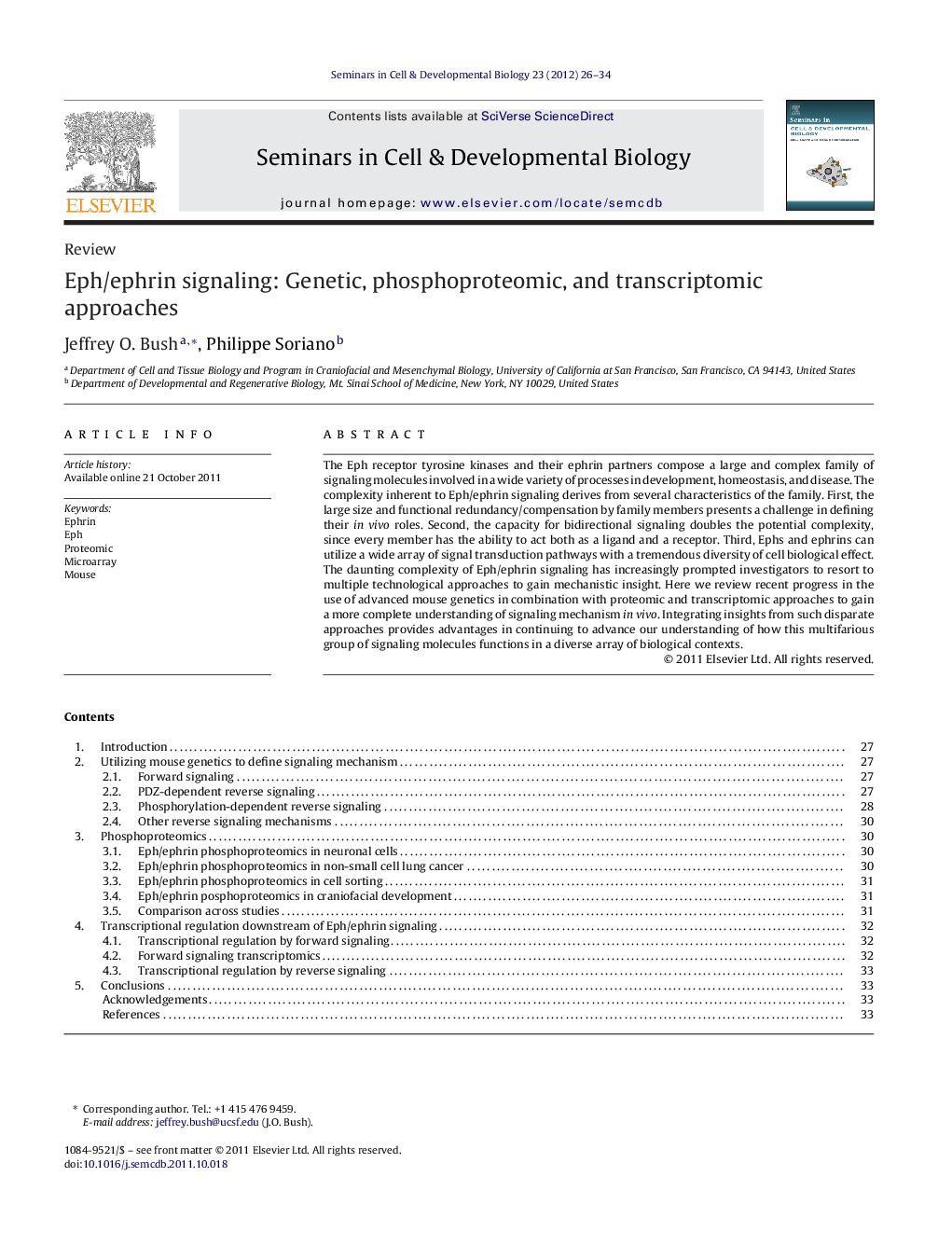| Article ID | Journal | Published Year | Pages | File Type |
|---|---|---|---|---|
| 2202764 | Seminars in Cell & Developmental Biology | 2012 | 9 Pages |
The Eph receptor tyrosine kinases and their ephrin partners compose a large and complex family of signaling molecules involved in a wide variety of processes in development, homeostasis, and disease. The complexity inherent to Eph/ephrin signaling derives from several characteristics of the family. First, the large size and functional redundancy/compensation by family members presents a challenge in defining their in vivo roles. Second, the capacity for bidirectional signaling doubles the potential complexity, since every member has the ability to act both as a ligand and a receptor. Third, Ephs and ephrins can utilize a wide array of signal transduction pathways with a tremendous diversity of cell biological effect. The daunting complexity of Eph/ephrin signaling has increasingly prompted investigators to resort to multiple technological approaches to gain mechanistic insight. Here we review recent progress in the use of advanced mouse genetics in combination with proteomic and transcriptomic approaches to gain a more complete understanding of signaling mechanism in vivo. Integrating insights from such disparate approaches provides advantages in continuing to advance our understanding of how this multifarious group of signaling molecules functions in a diverse array of biological contexts.
